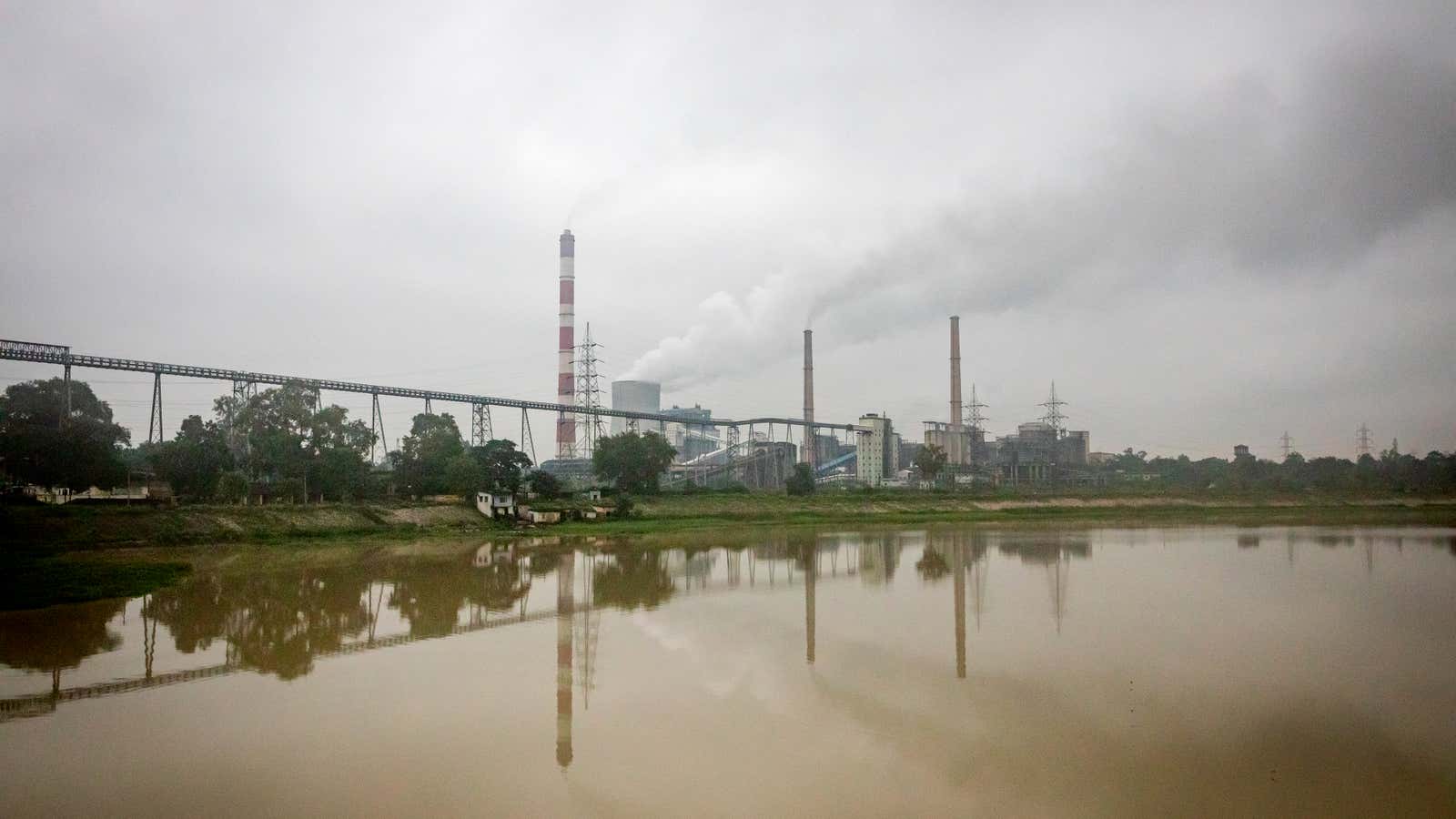The future of coal in India may not be as bright as some previously assumed.
The central Indian state of Chhattisgarh, home to the country’s third-largest coal reserves, will not build any new coal power plants, Shailendra Kumar Shukla, chairman of Chhattisgarh State Power Distribution Company, a state-owned utility, told Quartz India.
This comes only days after the government in the western state of Gujarat announced it will not give permission to build new coal power plants. Neither state, however, has made the decision permanent via legislation.
Bold call
Shukla is able to make the comment based on two factors.
First, Chhattisgarh already has a large number of coal plants that meet a vast majority of the state’s electricity demand and also export to other states. These plants are under-used, though, which means any future increase in the state’s power demand could be easily met.
The state-owned National Thermal Power Corporation (NTPC) is building a 1,600 MW coal-fired power plant in Raigarh district, where half the capacity is committed to meet Chhattisgarh’s needs. Shukla said this would be the last such plant to be built in the state.
Second, falling costs of solar power and the state’s responsibility to contribute to the ambitious national goal to build renewable power plants mean that Chhattisgarh is likely to rely on using solar to fill up any excess demand.
For example, after accounting for the state’s long-term power purchase agreements (PPAs), Shukla found that the state some times faces an excess demand of about 50 MW. To meet this shortage, Chhattisgarh is commissioning a solar farm that can generate 100 MW of power, along with batteries that can store 150 MWh of energy.
About 400 hectares of land has been allocated for the solar project and its future extensions in Rajnandgaon district. The state has signed a memorandum of understanding with the Solar Energy Corporation of India, which auctions renewable projects for developers.
Chhattisgarh can likely fill up any shortfall in supply through short-term PPAs or an electricity exchange, said Ankur Agarwal, associate director at India Ratings and Research. “With renewable energy costs falling, no state will want to sign long-term agreements with [coal power] plants,” he added.
Two is a trend?
Chhattisgarh’s decision will likely hit the coal industry harder than Gujarat’s move because the former has 16% of India’s total coal reserves. Coal power plants in Chhattisgarh offer cheap electricity, thanks to the low cost of transporting coal from the mine to the power plant.
The state’s power requirement is about 4,500 MW, said Shukla. Power plants located in Chhattisgarh have the capacity to produce more than 20,000 MW of power.
The upshot of so much capacity, even after exporting electricity to other states, is that many of these plants are running at close to 50% (pdf) of their maximum theoretical annual production capacity.
New coal power plants in India are also struggling to attract funds. The country’s public-sector banks have been saddled with huge debts after they provided cheap financing to build tens of coal power plants, expecting demand for electricity to grow. The rosy projections never materialised, and cheap solar and wind power met much of the modest growth India’s electricity consumption has seen.
Even though it has excess power capacity, Chhattisgarh is also required to meet renewable-energy goals to contribute to national targets. That is why a policy initiative to install rooftop solar panels in government buildings is in the works, said Alok Katiyar, CEO of Chhattisgarh Renewable Energy Development Agency, the government’s renewable energy arm.
Chhattisgarh is also finalising a net-metering policy, Katiyar added. This policy allows rooftop panel owners to supply excess power back into the power grid and earn money. The policy exists in states like Gujarat, Maharashtra, and Karnataka, which has helped them lead other Indian states in building up renewable-energy capacity.
This story is part of Covering Climate Now, a global collaboration of more than 250 news outlets to strengthen coverage of the climate story.
